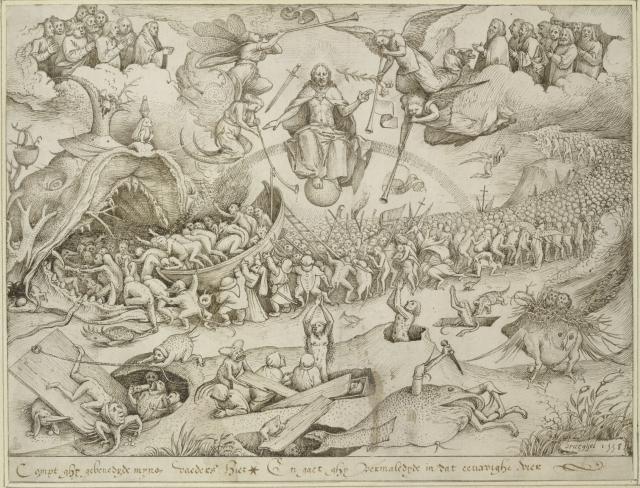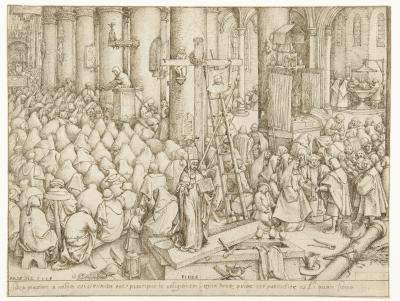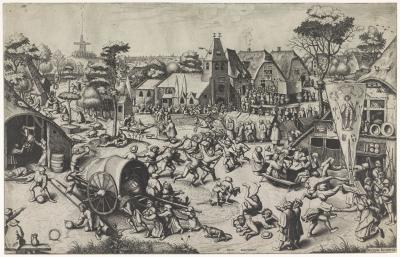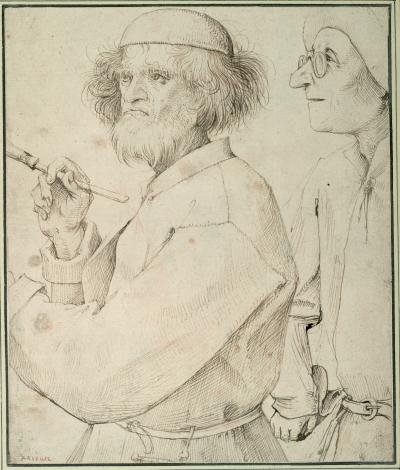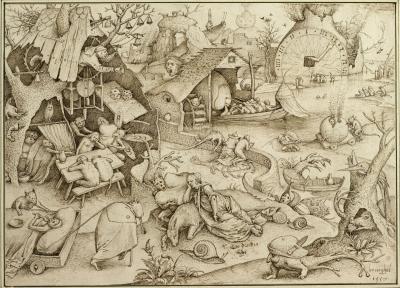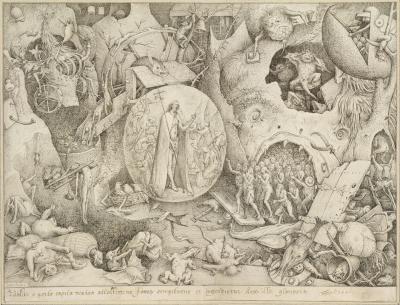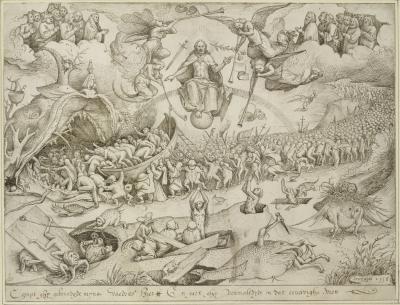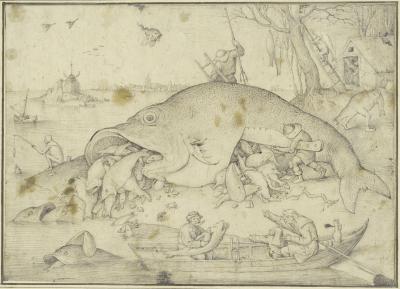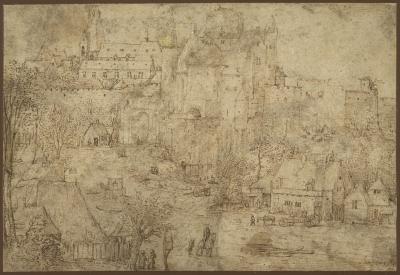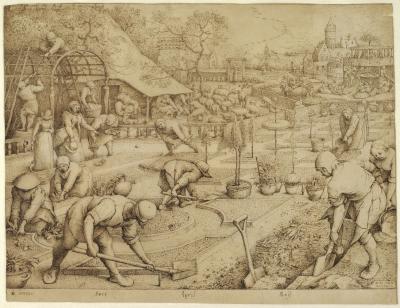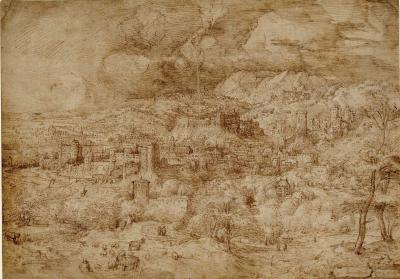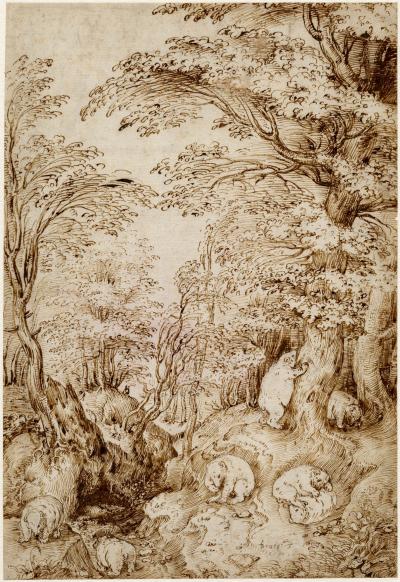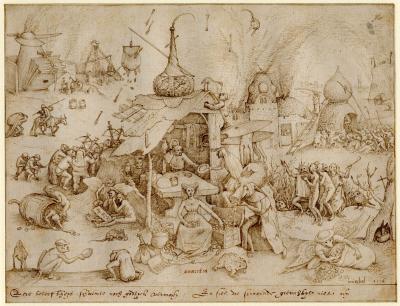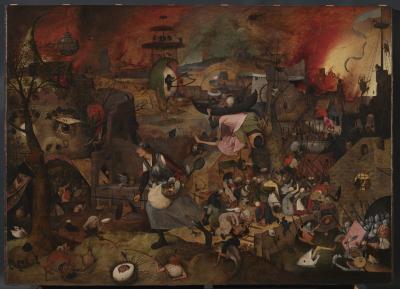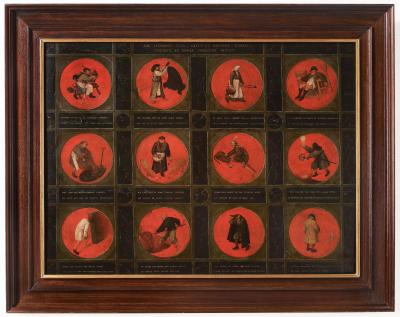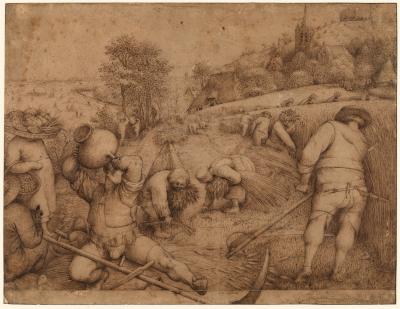More than half of the sixty-seven drawings that can safely be attributed to Pieter Brueghel—probably only a fraction of his total production—are engraver’s models. As opposed to the amazingly realistic and atmospheric pen drawings depicting mountainous and forest landscapes made during and shortly after his trip to Italy, in his allegorical designs Brueghel seems to have deliberately oriented himself on an older drawing style, namely on the work of his great predecessor Hieronymus Bosch. The disciplined execution of these very detailed representations filling the whole sheet of paper is directly related to its function: the task of the engraver was to transfer the drawn model to the copperplate down to the smallest detail.
In the late fifteen-fifties, Brueghel produced The Seven Deadly Sins, a series that was published in 1558 by Hieronymus Cock and engraved by Pieter van der Heyden. Brueghel designed the eighth picture in the series, The Last Judgment, as the transition to the realm of virtue, as it were. The New Testament provides an account of the second coming of the savior, Jesus Christ, at the end of time and of the resurrection and judgment of the dead. The events of the “last” day are comprehensively described in the Book of Revelations (Apocalypse 1:20) and in the eschatological texts in the Gospel of Matthew (Matthew 24 and 25). The theme had been so popular since the Middle Ages that Brueghel could find recourse in long-established pictorial traditions: Christ is enthroned on the world and a rainbow in the center; angels sound the trumpets calling humanity to judgment while the apostles and other saints appear on clouds. Assisted by ghoulish hybrid creatures derived from the repertoire of Hieronymus Bosch (where else?), the dead rise from their graves. The righteous are separated from the sinners beneath Christ. He gestures downward with one hand at the latter, who are being devoured by an enormous mouth, and blesses the saved, who, accompanied by angels, form a sheer endless procession toward the kingdom of Heaven.
At the time of its conception, the cycle reflected the irreconcilable differences between the Catholic and Protestant positions: while Catholics trembled in the face of Judgment Day, Calvinists were certain about the irrevocable predestination of their own fate. The passion with which the theological debate was carried out in public at that time might also have had a beneficial effect on Brueghel’s success. (Marian Bisanz-Prakken / Christof Metzger, 2013)

